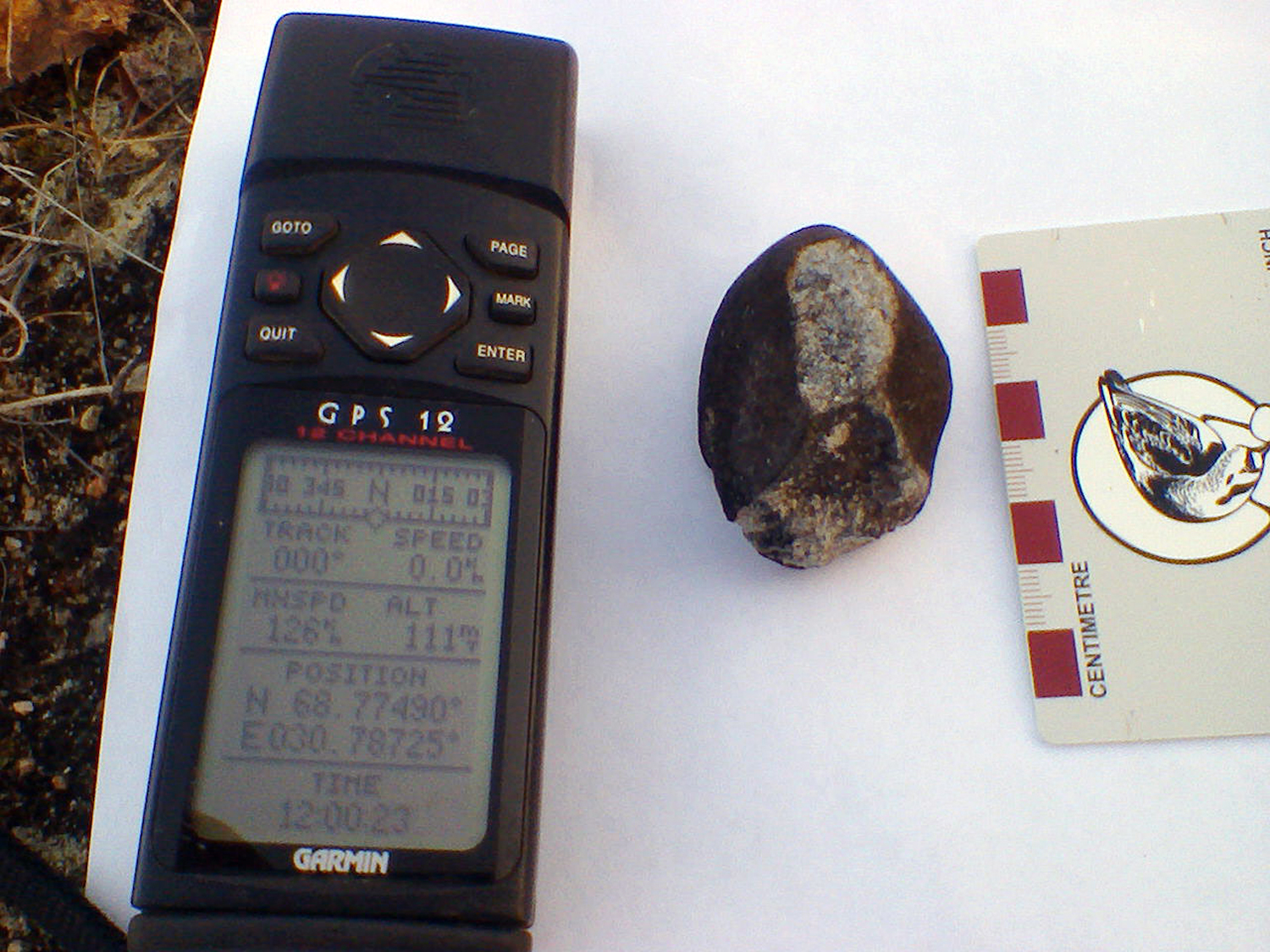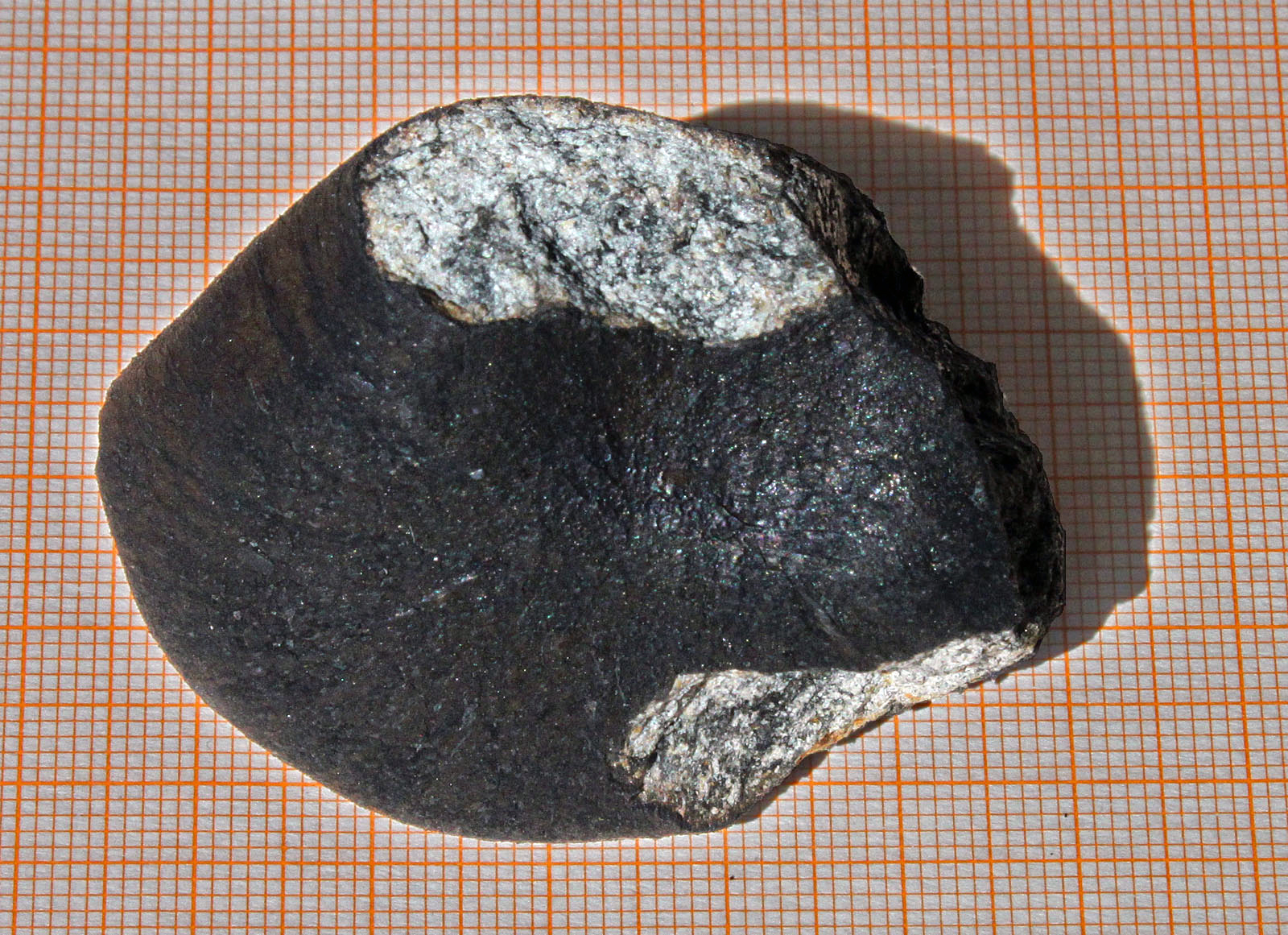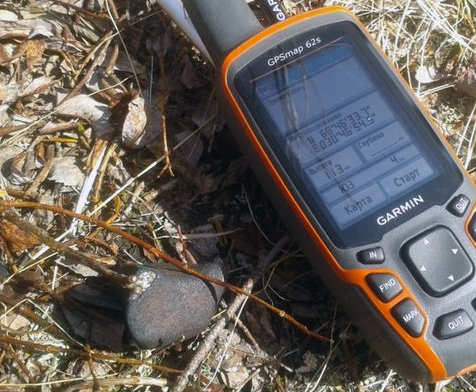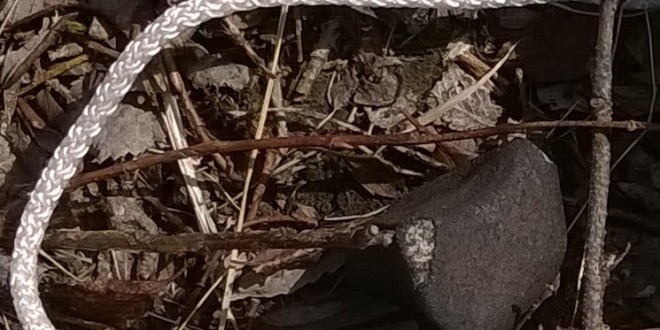ANNAMA (Аннама)
STILL UNDER CONSTRUCTION
[wc_row][wc_column size=”one-third” position=”first”] [/wc_column][wc_column size=”one-third”] [/wc_column][wc_column size=”one-third” position=”last”] [/wc_column][/wc_row] [wc_row][wc_column size=”one-half” position=”first”]
Annama # 1 (120.35 grams) / Photo: Maria Gritsevich 68.77490° N, 030.78725° E

Annama # 2 (47.54 grams) / Photo: Maria Gritsevich 68.77598° N, 030.78185° E
Entry in Meteoritical Bulletin Database
“ Annama 68.77491°N, 30.78726°E
Murmanskaya oblast’, Russia
Confirmed fall: 2014 Apr 19
Classification: Ordinary chondrite (H5)
History: A bright fireball appeared in the night sky over the Kola Peninsula, close to the Finnish border, on April 19, 2014. It was instrumentally recorded in Finland from the Kuusamo, Mikkeli and Muhos observing sites belonging to the Finnish Fireball Working Group. Additionally, a publicly available video
made by Alexandr Nesterov in Snezhnogorsk, Russia, from the opposite side of the fireball track, was carefully calibrated and taken into account in trajectory reconstruction. The fireball was very bright and was witnessed by many eye-witnesses in Russia, Finland, and Norway. The trajectory reconstruction, dark flight simulations and pre-impact orbit determination were done by Esko Lyytinen, Jarmo Moilanen, Steinar Midtskogen, Maria Gritsevich, Valery Lupovka, and Vasily Dmitriev. The initial mass of meteoroid was estimated to be about 500 kg. Based on the analysis of fireball observations it was predicted that part of the meteoroid survived atmospheric entry and reached the ground. Therefore, a meteorite recovery expedition was organized to search the calculated landing area. The international expedition participants were Alexei Ischenko, Tomas Kohout, Nikolai Kruglikov, and Grigory Yakovlev, logistically supported by Maria Gritsevich and Viktor Grokhovsky. The 5-day expedition took place at the end of May following snow melt and preceding vegetation growth. On May 29, 2014, a first 120.4 g meteorite fragment was found by Nikolai Kruglikov on a local forest road within the predicted impact area. A second 47.5 g meteorite fragment was found by Alexei Ischenko nearby on the following day. The name Annama was chosen because of a nearby river which is the closest landmark to the find location. Two subsequent expeditions did not lead to a recovery of more meteorites.Physical characteristics: The 120.4 g meteorite is ~70% covered with black fusion crust, with apparent stream lines on one side. The fresh surface is bright with abundant thin dark impact melt veins. The 47.5 g meteorite is fully covered with dark fusion crust. Bulk density of both meteorites (measured with modified Archimedean method using glass beads) is 3.5 g/cm3, grain density of both meteorites (measured with gas pycnometry) is 3.8 g/cm3. Resulting porosity is 5-8% (values measured by T. Kohout and M. Gritsevich, UHelsinki). Bulk density of the second meteorite (measured with Archimedean method using ethanol) is 3.6 g/cm3 (values measured by G. Yakovlev at UrFU). Magnetic susceptibility of both meteorites is log χ = 5.4 (χ in 10-9 m3/kg, measured by T. Kohout and G. Yakovlev).
Petrography: Classification (J. Haloda, P. Halodova, CzGS) Thin sections show a recrystallized fine-grained granular texture. Chondrule shapes are readily delineated. Irregular fractures in olivine and undulatory extinction of olivine and plagioclase indicate a shock stage of S2. Thin veins of impact melt are also present.
Geochemistry: EPMA results (J. Haloda, P. Halodova, CzGS ), Olivine Fa18.6±0.3 (N=60) and low-Ca pyroxene Fs16.6±0.2 and Wo1.26±0.26 (N=65). Also present are diopside (Fs6Wo46), plagioclase (Ab80An14Or6), chromite, chlorapatite, merrillite, troilite, kamacite, taenite and tetrataenite.
Classification (J. Haloda, P. Halodova, CzGS), Ordinary chondrite, H5, S2, W0.
Specimens: 120.4 g main meteorite was divided into a 98.4 g type specimen (UrFU), 6.2 g cut-off (Vernad), 2 thin sections (Vernad and LTKM) and several smaller (below 1 g) fragments (UHelsinki). Second 47.5 g meteorite was divided into 40.0 g and 6.6 g fragments, both located in UHelsinki.
State/Prov/County: Murmanskaya oblast’
Date: 2014 Apr 19
Latitude: 68.77491°N
Longitude: 30.78726°E
Mass (g): 167.9
Pieces: 2
Class: H5
Shock stage: S2
Weathering grade: W0
Fayalite (mol%): 18.6±0.3 (N=60)
Ferrosilite (mol%): 16.6±0.2 (N=65)
Wollastonite (mol%): 1.26±0.26 (N=65)
Magnetic suscept.: 5.4
Classifier: J. Haloda, P. Halodova, CzGS
Type spec mass (g): 98.4 g
Type spec location: UrFU
Main mass: UrFU
Finder: Nikolai Kruglikov and Alexey Ischenko
Comments: Abundant thin impact melt veins. The case is also known as Kola or Murmansk fireball.; submitted by Viktor Grokhovsky “
Scientific literature:
Annama H5 Meteorite Fall: Orbit, Trajectory, Recovery, Petrology, Noble Gases, and Cosmogenic Radionuclides
Kohout T., Gritsevich M., Lyytinen E., Moilainen J., Trigo-Rodríguez J. M., Kruglikov N.,Ishchenko A., Yakovlev G., Grokhovsky V., Haloda J., Halodova P., Meier M. M. M., Laubenstein M., Dimitrev V., Lupovka V.
78th Annual Meeting of the Meteoritical Society (2015)
Berkeley, USA, July 27-31 2015
PDF (abstract)
Annama H chondrite—Mineralogy, physical properties, cosmic ray exposure, and parent body history.
Kohout, T., Haloda, J., Halodová, P., Meier, M. M. M., Maden, C., Busemann, H., Laubenstein, M., Caffee, Marc. W., Welten, K. C., Hopp, J., Trieloff, M., Mahajan, R. R., Naik, S., Trigo-Rodriguez, J. M., Moyano-Cambero, C. E., Oshtrakh, M. I., Maksimova, A. A., Chukin, A. V., Semionkin, V. A., Karabanalov, M. S., Felner, I., Petrova, E. V., Brusnitsyna, E. V., Grokhovsky, V. I., Yakovlev, G. A., Gritsevich, M., Lyytinen, E., Moilanen, J., Kruglikov, N. A. and Ishchenko, A. V.
Meteoritics & Planetary Science. doi: 10.1111/maps.12871
Version of Record online: 11 APR 2017
LINK
“The fall of the Annama meteorite occurred early morning (local time) on April 19, 2014 on the Kola Peninsula (Russia). Based on mineralogy and physical properties, Annama is a typical H chondrite. It has a high Ar-Ar age of 4.4 Ga. Its cosmic ray exposure history is atypical as it is not part of the large group of H chondrites with a prominent 7–8 Ma peak in the exposure age histograms. Instead, its exposure age is within uncertainty of a smaller peak at 30 ± 4 Ma. The results from short-lived radionuclides are compatible with an atmospheric pre-entry radius of 30–40 cm. However, based on noble gas and cosmogenic radionuclide data, Annama must have been part of a larger body (radius >65 cm) for a large part of its cosmic ray exposure history. The 10Be concentration indicates a recent (3–5 Ma) breakup which may be responsible for the Annama parent body size reduction to 30–35 cm pre-entry radius.”






































